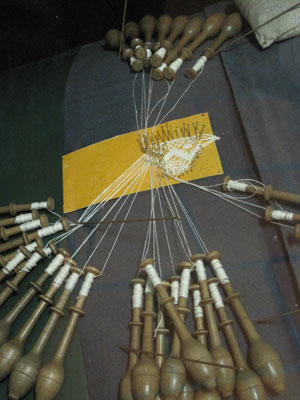Bruges delights
This item appears on page 33 of the March 2013 issue.
During a trip to Europe’s Low Countries in spring 2012, my husband, Ed, and I spent May 2-4 in Bruges. Our lodging was the 37-room Hotel Jan Brito (Freren Fonteinstraat 1, B-8000 Bruges, Belgium; phone +32 50 33 06 01, fax 33 06 52), at €95 (near $129) per night, which we found on the Internet. The hotel is a 16th-century mansion extensively renovated in the mid 1980s.
The Jan Brito is in a good location, with an underground public parking garage two blocks away; parking there cost about $12 per day. You may want to ask the hotel staff to explain the process for paying when exiting the garage. The hotel staff is fluent in English and extremely accommodating, even providing us with umbrellas for the rainy day’s touring.
We had been in Bruges 30 years earlier, so it was like returning to an old friend. We quickly headed out to once again explore the romantic and picturesque canals as well as Burg Square, where the City Hall is located, and Market Square with its belfry.
One of the attractions we missed on our previous trip was a small, out-of-the-way lace center/museum, the Kantcentrum (Peperstraat 3A, B-8000 Bruges, Belgium; phone +32 [0] 50 33 00 72 — €3 adult or €2 senior 65 and over), and the attached 15th-century church, so this was our first order of touring business.
Constructed according to the plan of the Church of the Holy Sepulchre in Jerusalem, the Jerusalem Church was built by the Adorni family, merchants from Genoa, Italy, who settled in the area. It is still owned by their descendants.
When we arrived, a dear elderly gentleman was lighting the candles, and he tried as best he could to explain the significance of the chapel and the statues, including a representation of the tomb of Christ. There are beautiful stained-glass windows.
The lace museum is located in renovated almshouses. The Adorni family built these for the older (mostly) female lace makers so they would have a decent place to live and still practice their craft.
The exhibit cases in the museum are filled with exquisite handwork. I spoke with one of the ladies in the gift shop, who explained that lace sold in shops in the square is mostly machine-made, while their lace is handmade by volunteers. The proceeds from the sales of this lace help defray the expenses of keeping the church open. Of course, I had to buy two handmade lace bookmarks for our grandchildren, at €12.50 (near $17) each.
On our way to the church, we passed Restaurant Rock Fort (Langestraat 15, 8000 Bruges, Belgium; phone +32 [0] 50 334 113). It looked interesting, so we returned for lunch and found a small restaurant with a crisp, modern interior.
The wait staff first brought small bowls, one filled with a pork pâté and one with butter, plus a bowl of garlic- and herb-seasoned popcorn. Crusty slices of light wheat and oatmeal bread came in a paper bag.
The lunch set menu that day, at €15 (near $20), was sliced duck breast cooked to perfection over puréed eggplant, with thin green beans, chopped tomatoes and assorted mushrooms, garnished with a sprinkling of baby green peas. The sauce was divine! The chef told me it was sesame oil, soy sauce, sake, Japanese plum wine, chopped green onions and fresh garlic. There also was a bowl of roasted potato wedges coated with spices.
We decided to get a small mixed-greens salad, which cost only €1.50 and was big enough for two people. With the meal came coffee or tea and, at the end, chocolates.
After lunch we headed out to lose ourselves in the backstreets. As we rounded the corner near the Church of Our Lady (Mariastraat 38), I happened to see a sign advertising a free harp concert to be given outside the church by Luc Vanlaere. Ah, a nice repose from all that walking!
Luc played his own compositions using Irish (Celtic), Japanese and classical harps. He also used an instrument called a hang, which has a melodic, old-world quality with a hint of steel drum. I thought for sure it was a traditional Middle Eastern instrument, but after the concert Luc told us it was a fairly new instrument made in Switzerland.
All in all, a great day spent in Bruges!
NANCY NORBERG
Charleston, SC


